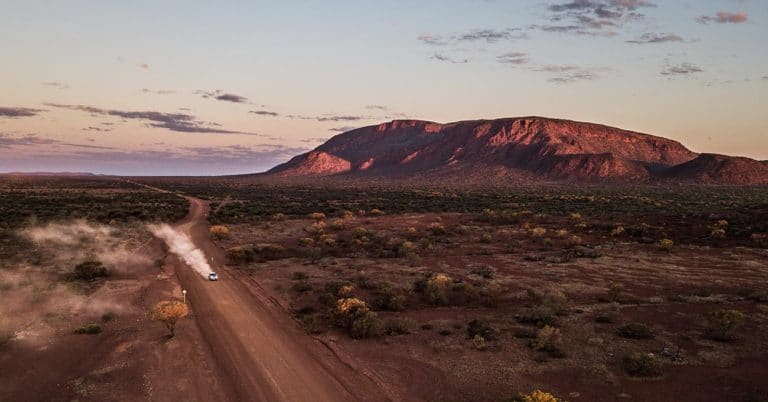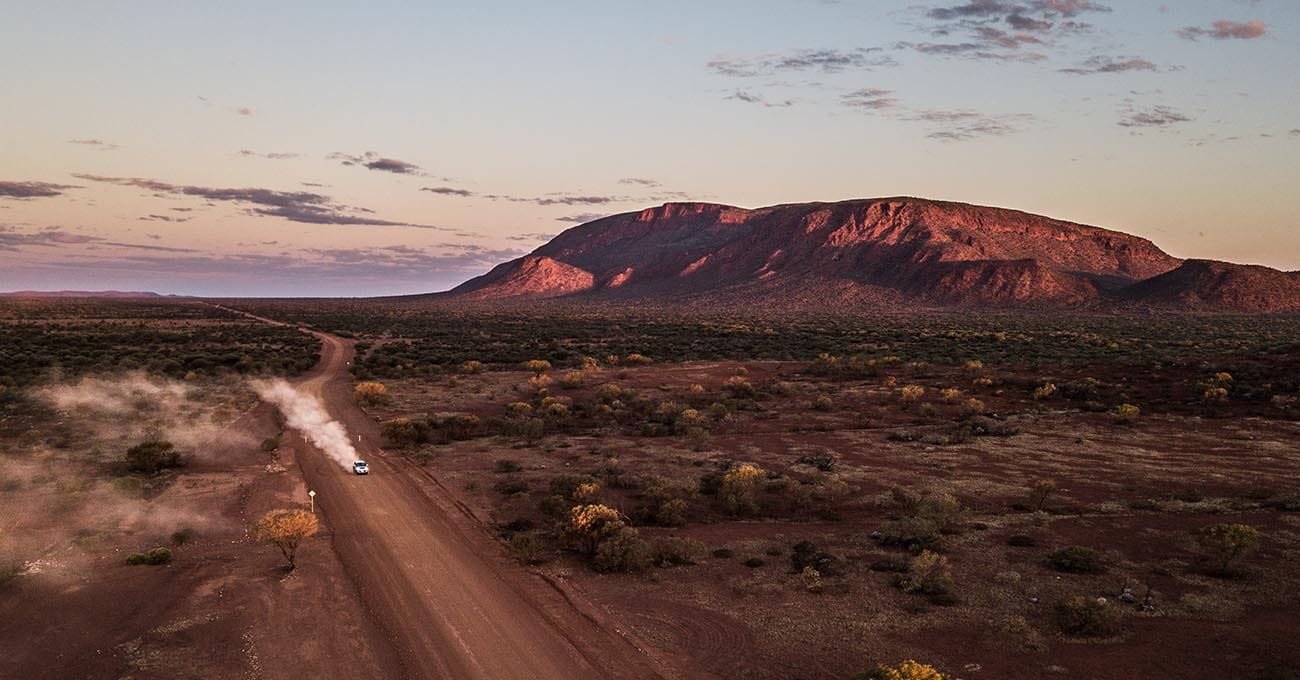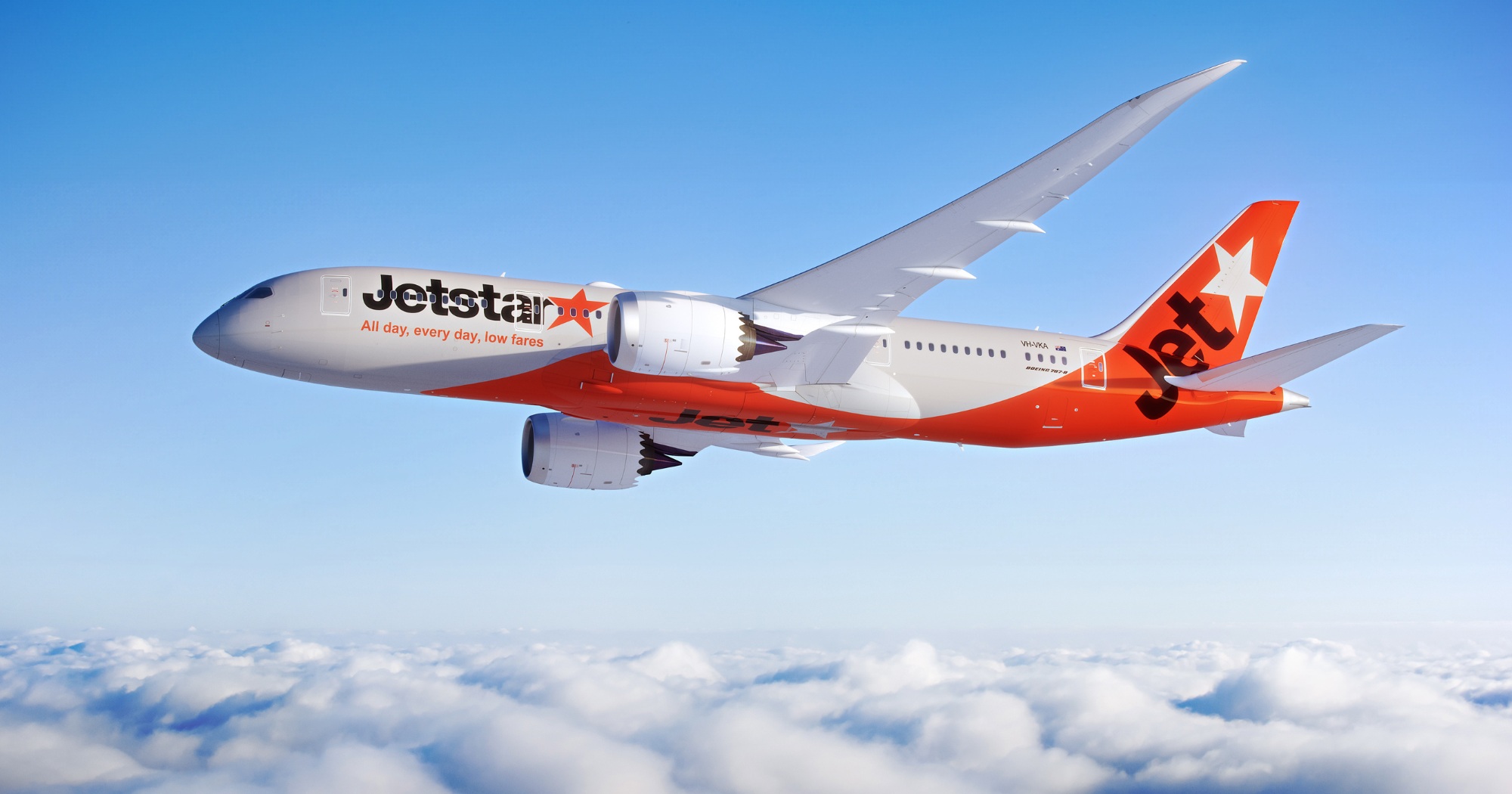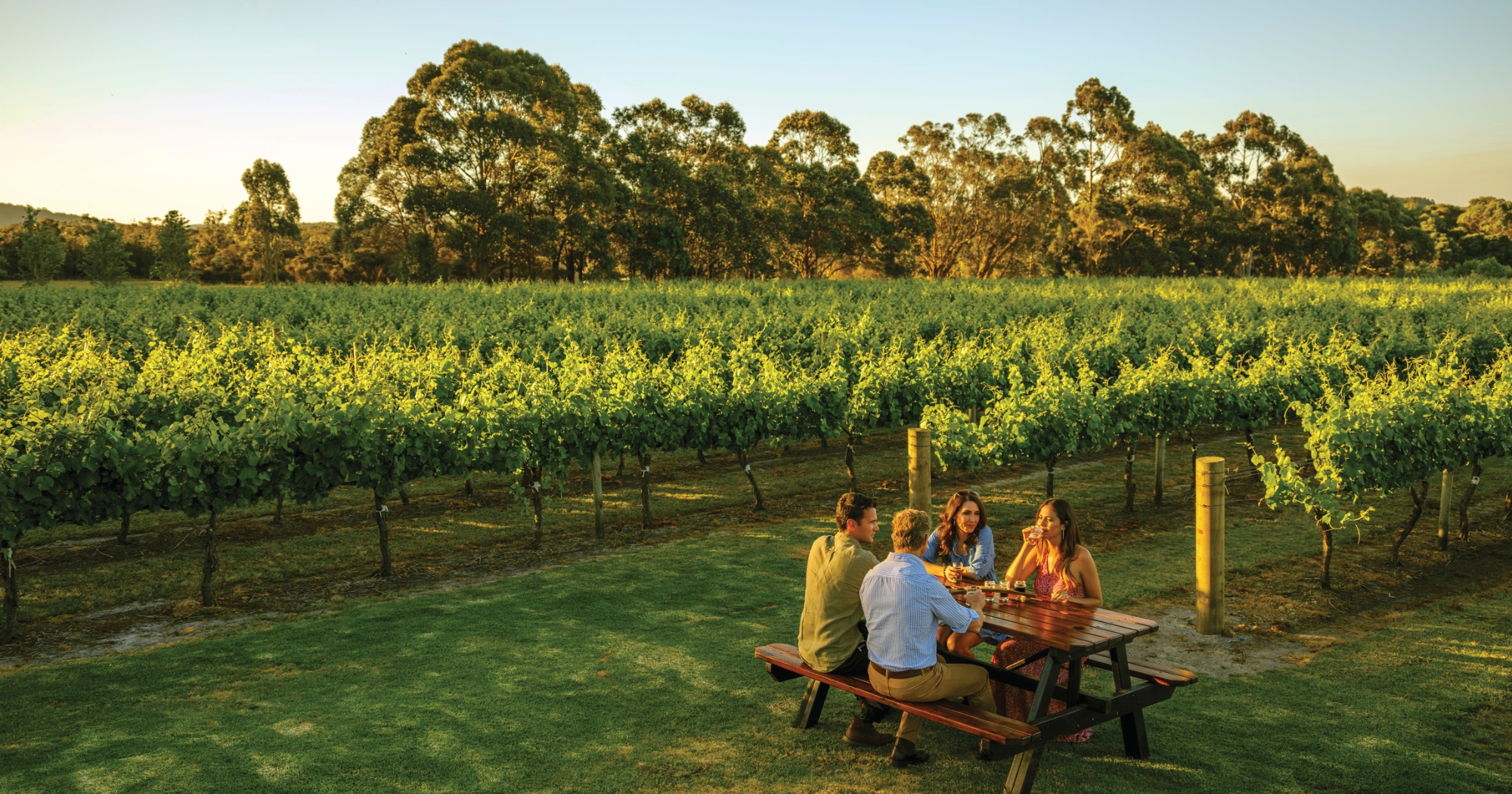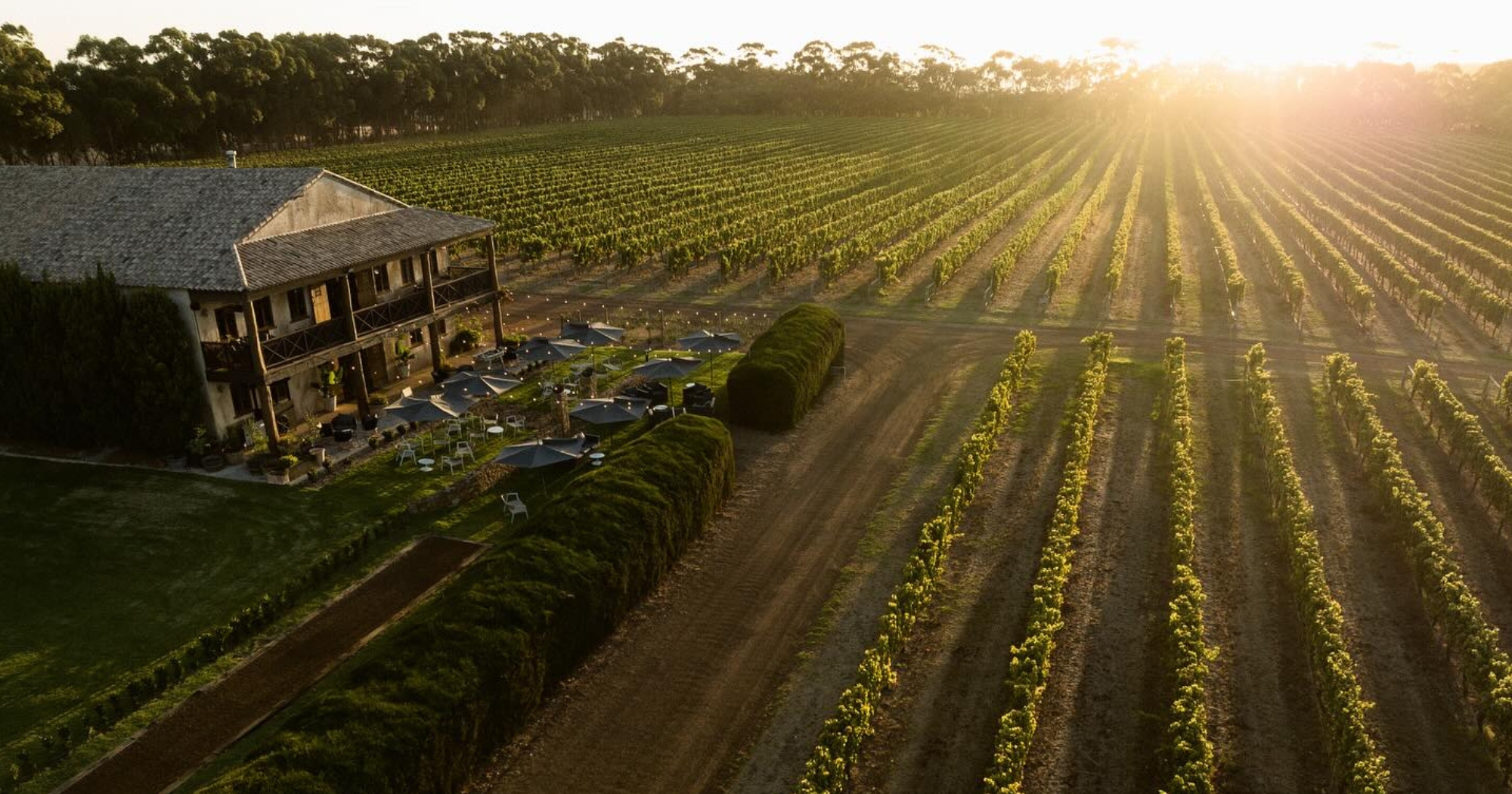This incredible road trip through the Gascoyne Murchison is one for the ages.
Make sure your next holiday is guaranteed to rock in more ways than one. The place to ensure just that is with a Gascoyne Murchison road trip.
This region is famed for rugged beauty and providing some quintessential outback encounters such as seeking out ancient rock art, making a splash in local swimming holes and climbing the world’s biggest rock, Mount Augustus. If you like cheap thrills on wheels, it is also renowned for its epic 4WD trails in the world.
So how to get the best out of the region? Hop in a 4WD and tackle this 9-day itinerary through quaint outback towns, amazing hikes and trails and weaving through spectacular natural wonders and lush wildflowers. We promise you, this road trip will rock you!
We promise you, this epic self-drive itinerary from Australia’s Golden Outback’s through Road Trip Country will rock you!
Day 1
Perth to Mount Magnet (579km)
Set off nice and early from Perth as you’ve got a few kms ahead of you today! Pack some snacks or brunch to eat on the road and head out through the Swan Valley into the gorgeous Northern Wheatbelt. Stop at Dalwallinu to admire the adorable heritage exterior of the General Store and, if it’s Spring, the wildflowers peeping out from roadside verges along the main strip.
Hold onto your hunger until Payne’s Find, where you’ll find a classic outback roadhouse dripping with charisma. This former mining settlement – so named after the first person to strike gold here, Thomas Payne – is today a tiny town centered around the roadhouse, and it’s stuffed with posters, knick-knacks and quirky memorabilia. Order a massive President’s burger (featuring steak and fried onion) and sit outside by the giant gums, where you can admire the glittering ruby colour of the soil, and an emu or two if you’re lucky.
Your last leg of today’s journey takes you to Mount Magnet, a classic outback town with a laidback lure. Beyond the Art Deco facades of the main drag, you’ll find fabulous old pubs like the Commercial Club Hotel Motel, which is hiding a cute little beer garden out back. Strewn with roped lights and edged by well-tended plants, it’s a peaceful spot to enjoy a thick steak or giant chicken Parma. Stay for a game of pool (the two well-lit tables are good excuse to bond with friendly locals) or take the two-block stroll back to your accommodation at Mount Magnet Caravan Park or Miners Rest Units, being sure to look up and admire the stars. If you wish to wake up early for sunrise tomorrow, hit the hay early.
Day 2
Mount Magnet to Cue (85km)

Enjoy a hearty breakfast and grab a takeaway coffee, it’s time to hit the road. Today’s an easy driving day, so you can explore along the way, stopping lots and enjoying a hike, photo opportunity or picnic. Your first stop is just outside of Mount Magnet, The Granites – a striking set of rocky outcrops reaching 15 metres high, and a site of great cultural significance to the Badimia people. Especially beautiful at sunrise, when you’re most likely to spot a shy kangaroo amongst the boulders, The Granites are home to rock art – both carvings and paintings – dating back some nine thousand years. There are also some lovely rock formations to admire – keep an eye out for the ‘peephole’ through a section of rock, which looks out to the landscape – it’s almost perfectly circular.
At one stage in the early 1890s, there were more people in Cue than in Perth, as the population swelled with those hoping their fortune was hidden in the surrounding landscape. Today, despite being a decidedly quieter place, the town and its buildings retain a lovely sense of grandeur, which is immediately obvious from the facades of the main street. This is where you’re staying tonight, so drop in and leave your bags with reception at Queen Of The Murchison. Built in the 1930s as a public bar, the hotel was shut down in the 1950s for an incredible forty years before current owners Daryl and Joyce Penny resurrected it to blazing glory. High ceilings, decorative wooden architraves and classic Art Deco curves make this the area’s ultimate bed and breakfast – especially when you add in free WiFi and the café’s espresso machine.
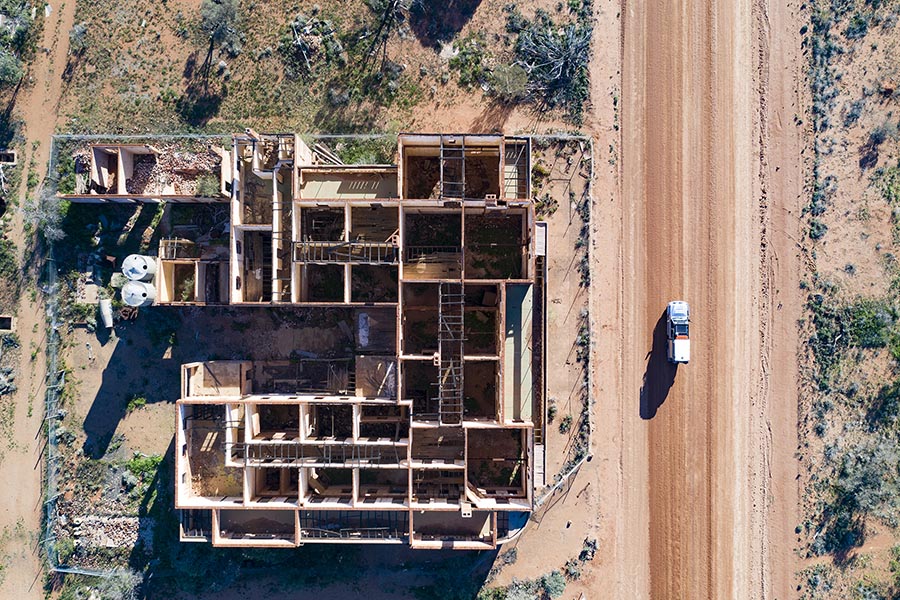
But you’re not here for long. Recaffeinated, hop back in the car: next stop is the abandoned ghost town of Big Bell. Established in 1935 for those who came to work in the adjacent mine, the town’s remains serve as a vivid illustration of the area’s epic past. According to historical research notes, Big Bell was once a place with “a formidable list of social and sporting organisations” and “ornamental trees”, “painstakingly tended”. Unfortunately, however, the Big Bell gold mine was shut and residents left in search of new fortunes, leaving the town to decay. Wander the area to see collapsed houses, a crumbling church and what once must have been a grand hotel, thumping with workers letting off some evening steam. Now a hollowed-out two-storey shell, its impressive Art Deco origins are still clear across its eroded façade.
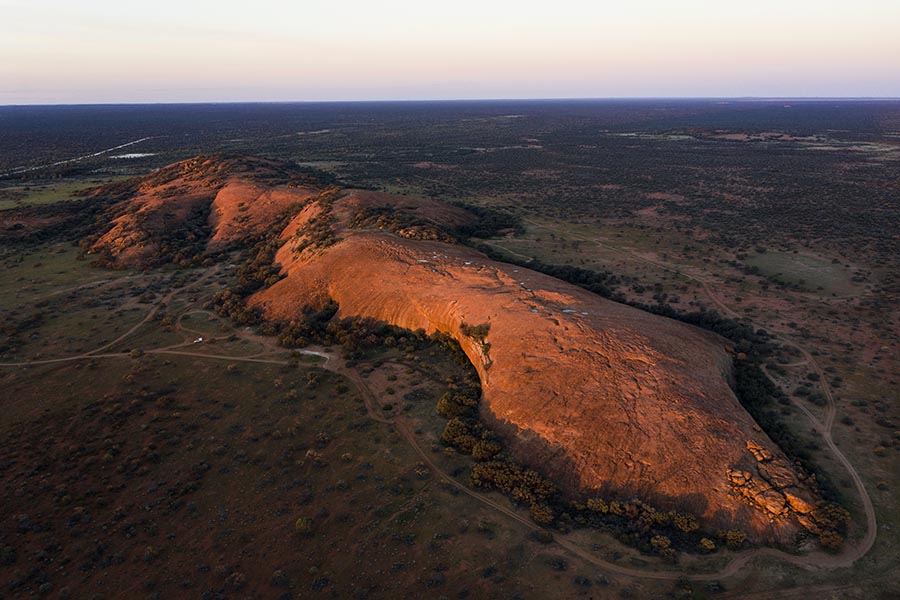
From here, continue on to discover the rock formation that’s been nicknamed ‘Uluru’s little sister’. At nearly two kilometres in length, Walga Rock is amazingly similar in structure and appearance to Uluru and is the second-largest monolith in Australia after its more famous cousin. You’ll need to open the gate to drive in (it’s unlocked), being sure to close it after you’ve driven through.

A site of significance for the Wadjari people, the rock hides an ancient gallery of Aboriginal rock paintings – the largest in Western Australia – inside a cave. As such, make sure you obey the requested behaviours on the signage by the entrance. If you’re feeling adventurous, it’s a 20-minute walk to the top, which will reward you with wonderful views over the region, especially at sunset. If you do stick around until dusk, however, note that the walk down can be a little tricky in the lower light – taking a torch with you might be a good idea.
Day 3
Cue to Mount Augustus, via Meekatharra (476km)
Today’s the big one – you’re off to see the world’s biggest rock! Enjoy breakfast and stock up on snacks. Hop in the car and drive the just over an hour drive to Meekatharra. Home to yet more lovely architecture (including a sweet little post office), this is your last chance to refuel and grab snacks before turning off the bitumen for today’s ultimate destination. You’ll see the turnoff for Mount Augustus 500 metres before reaching the town center, so double back once your stores are replete and get ready to hit the gravel.
It’s roughly five hours from here to Mount Augustus, so settle in for a stretch of road is quite unlike anything you’ll have seen so far. Admire the unusual colour of the earth, which flows continuously between chalky white soils, fields of olive-coloured scrub and a dark, ruby red moonscape, and if you stop for a look at Mount Gould Lock-Up – an abandoned police station from the 1800s, on the right side of the road (it’s signposted) – be sure to look closely at the ground. It’s covered in rocks of quartz! WA’s famous wildflowers may be springing up in earnest at this stage if it’s spring.
As you approach Mount Augustus, the rock’s outline can be hard to distinguish in afternoon shadow, but don’t worry – there’ll be plenty of time to admire its sights properly. Start by taking the 40-minute Loop Drive around the base of the rock. As you edge around to its northern face, you’ll begin to see its resemblance to Uluru – and begin to appreciate just how enormous it is. Mount Augustus Tourist Park is on the loop (signposted), so pull up and check into your cabin.
This surprisingly lush, well-tended patch of paradise is resplendent with bright green lawns and one of the cutest open-air bars you’ll ever see, housed in a little wooden structure and surrounded by towering gumtrees, so you may wish to spend the final hours of the afternoon settling in. Alternatively, take the 15-minute drive to Emu Hill lookout, from which it’s not hard to understand how Mount Augustus came to be of spiritual significance to the Wadjarri people. As the sun dips toward the horizon, the rock will begin its spectacular daily show of changing colours. It’s the perfect moment for a celebratory drink of something cold.
Day 4&5
Mount Augustus
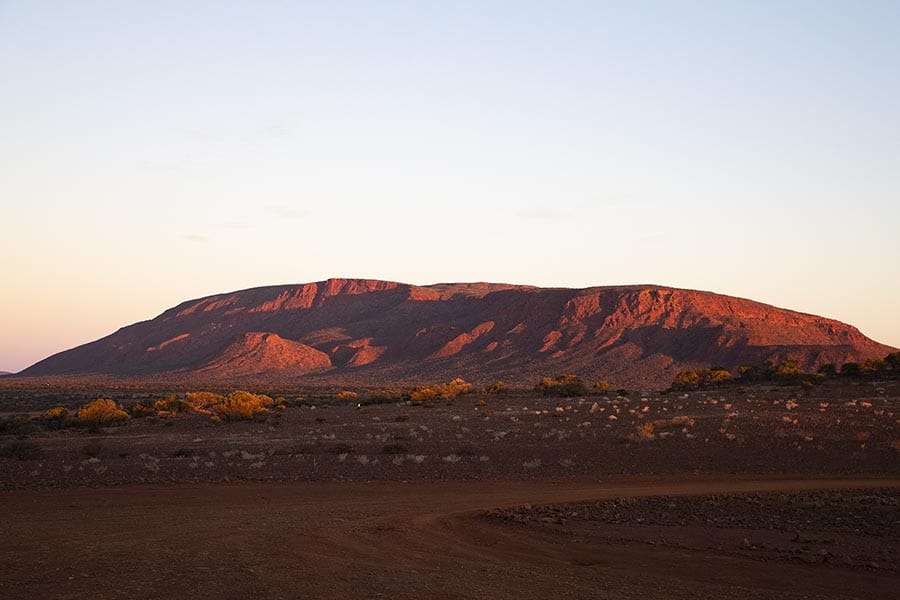
Tomorrow you’ll be tackling the hike to Mount Augustus’ peak, so take it easy today – there’s plenty to see and do around its base. You may wish to set off for the Flintstone Rock Walk, for starters: this incredible little trail is only 500 metres, but takes you to a set of ancient Aboriginal petroglyphs (carvings in rock) – they’re hidden under a large slab of rock that bridges a creek; crawl underneath to spot them. A sign by the walk entrance will show you the way.
Mount Augustus is a monocline: a type of rock formation that leans, or ‘dips’ in a single direction. At 1700 million years old, it is three times older than Uluru and twice its size, making it the largest rock in the world – and today, you’re going to climb its peak. For the best experience, make sure you prepare a lunch and plenty of water the night before, and leave before dawn to make your way around the rock to the entrance of the Summit Trail. (Be sure to carry sun protection, too.) Classified as a Grade 4 walk (from a possible score of 5), the hike is a challenging six-hour return adventure – and well worth it. Along the way you’ll be greeted by impressive views and a beautifully clear silence punctuated only by bird song, with only two posted signs, and a chain of coloured dots to mark your path.
You’ll know when you’ve reached the peak by the hand-built rock cairn that greets you. Built by local Keith Moon and a band of his friends, it offers 360-degree views of the region from its top, along with the likelihood of your phone suddenly pinging, thanks to the odd bar of reception found up here. There’s a surprise waiting for you at the summit too, which we won’t spoil, other than to tell you to look for the picnic table. Enjoy a congratulatory sandwich while you sit; you’ve earned it! The rest of your day is yours to spend at leisure.
Day 6
Mount Augustus to Gascoyne Junction (300km)

Today you depart the rock for yet more incredible sights. Refuel at the tourist park before you go, making sure to ask for directions to Kennedy Range National Park, as varying road conditions along the gravel will dictate which route is best.
If using a GPS, set it to Temple Gorge, which is located within Kennedy Range National Park. (Otherwise, you may find yourself being routed to the other end of the mountain range.
If it’s Spring, prepare your camera: the road to Kennedy Range National Park heads west towards the Australian coastline, and as you traverse the continent W’s famous wildflowers begin appearing in thick clumps, sometimes even scattered in carpets of yellow, white, purple and red. Don’t be surprised if you find yourself pulling over more than once to take photos, but resist the urge to spend too long: there are plenty more wildflowers to see in the coming days, and the exquisite Kennedy Range is one of Australia’s most underrated sights. With a magnificent cliff face that extends for several kilometres, which looks rather like the result of a giant serrated knife, it would be easy to spend several days exploring the park.
If time is short, however, make your way to one of the more approachable trails. Honeycomb Gorge is the park’s most popular spot; an easy 500-metre walk from the carpark (signposted) will reward you with the unusual sight of this enormous gorge, with walls pockmarked like honeycomb. While here, you may spot the area’s distinctive Dawson’s burrowing bees – these lovely native creatures can be found buzzing about the small pool at Honeycomb gorge between July and September. Perhaps explore one of the other trails (information and maps are signposted by the park entrance) before heading to the nearby town, Gascoyne Junction. Spend the night at Junction Tourist Park; brand new accommodation is clean and well-appointed, and the adjacent bistro does great pub food in a bright, modern and airy environment.
Day 7
Gascoyne Junction to Wooleen Station (330km)
Refuel at the roadhouse onsite, and get ready to leave the bitumen once more: today you’re headed south, to famous Wooleen Station!
Nearing half a million acres in size, this breathtaking outback property made its way onto Australian television screens – and into the hearts of viewers – when taken over by young newlyweds, David Pollock and Frances Jones in 2007. Controversially, the couple have removed almost all cattle from the property in an attempt to return the land to good health; instead, the property has become a local icon for travellers, who come to learn about sustainable land management in this remote part of the world.

You’ll learn first-hand about life on the farm on this afternoon’s Guided Sunset tour. Hosted by David, this fascinating experience concludes (with permission) at Tanjimooka, an Indigenous sacred site found on the property, which is not dissimilar in appearance to Australia’s famous Devils Marbles. As you stand atop the granite outcrop, which offers far-reaching 360 degree views of the recovering landscape, you may be struck by the notion that it’s a fitting place from which to observe the enormity of the couple’s undertaking (especially with a glass of Australian sparkling wine in hand). Stay on-site at their beautiful seven-bedroom homestead, a rambling colonial treasure listed on the National Trust.
Day 8
Wooleen Station
Wooleen Station might feel a million miles from care, but there’s no shortage of things to do. Feeling active? Borrow a mountain bicycle and set off on one of the signposted trails. Twitchers may wish to head to Yewlands Pool or Wooleen Lake, where several notable bird species have begun to return since the new land management practices were introduced. If it’s hot, head to the Murchison River.
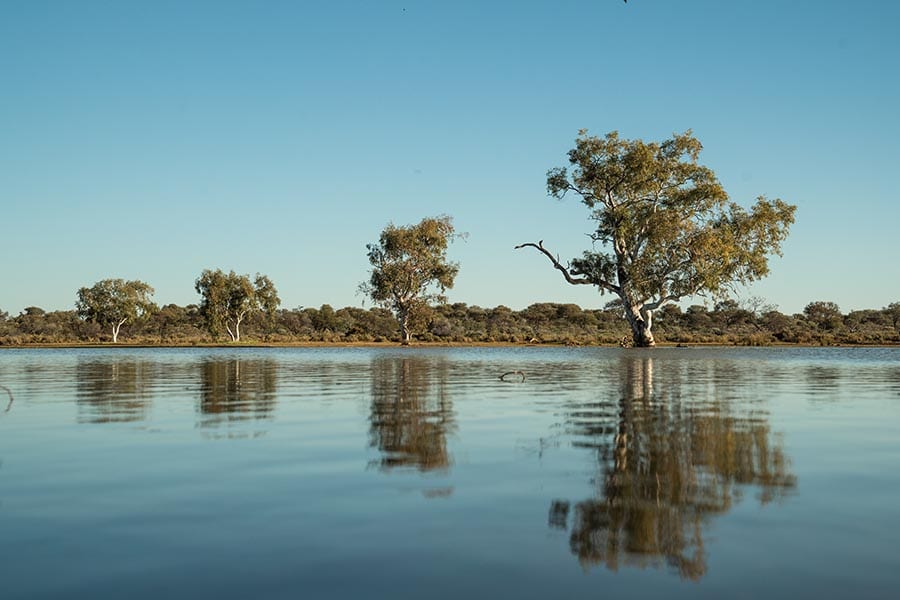
This serenely still body of water, surrounded by wide, sandy banks and giant, wizened gumtrees is perfect for a cool afternoon swim. There’s even a canoe here if you feel like hopping in (just grab the paddle from the homestead before you set off). Whatever you choose, make sure your schedule has you back for dinner. In line with your hosts’ sustainability principles, much of the food is grown organically on site, and their memorable meals are served over several courses at a long table lit by candlelight, with a generous helping of conviviality alongside the homestead’s other guests.
Day 9
Wooleen Station to Perth (657km)
The adventures are almost over, but today you’re in for one last treat. Depart early and set your GPS for Coalseam Conservation Park. This sheltered valley, with its mineral-rich soils, has created ideal conditions for WA’s native everlastings, which bloom here in carpets so thickly knotted it’s nigh on impossible to see the ground beneath. As you drive through the valley, try not to leave your jaw on the floor: quite aside from their heavenly appearance and fragrance, their collective sway is quite hypnotic, as the breeze causes ripples through the blooms across and over the hills. Expect anything from the faintest blush of rose to a celebratory hot pink; from cream to bright yellow; and all shades in between. Hungry for more? Follow the Wildflower Way to nearby Morawa and down through Perenjori, Dalwallinu and Wongan Hills for more spectacular displays on the way back to Perth.
En route, kick back and reflect on completing a road trip that genuinely rocks!
For further road trip inspiration visit roadtripcountry.com.au and also you could WIN the ultimate road trip experience with a RedSands 4WD Camper for 14 days and $1,000.
Discover more of WA with our Western Australia travel guide.
See also:

